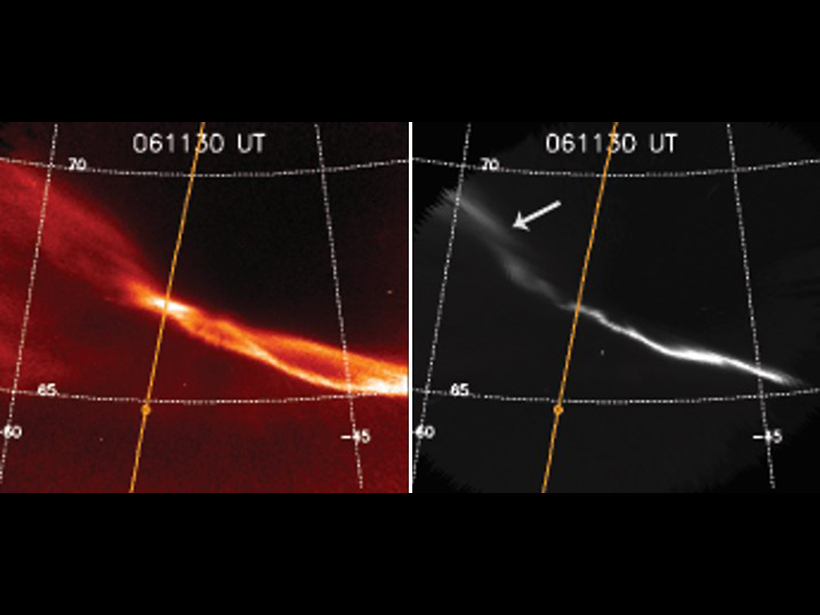Source: Journal of Geophysical Research: Space Physics
Few studies have yet explicitly connected observed auroral forms to satellite measurements of the precipitating particles and fields. In particular, Liang et al. [2019] have now distinguished the red line and green line aurora, which is new and noteworthy. This identification provides direct evidence that the lower-energy electrons associated with broadband (or Alfvenic) acceleration preferentially produce red-line emission.
With these joint optical and e-POP (Enhanced-Polar-Outflow-Probe) particle observations of Alfvenic auroras, the authors show that the 630 nm red-line auroras evolve distinctly from those seen on other optical instruments and are associated with low-energy precipitation bursts. These precipitation bursts are often the result of suprathermal electron bursts, which are characterized by a broad energy spectrum and a field-aligned pitch angle distribution.
Citation: Liang, J., Shen, Y., Knudsen, D., Spanswick, E., Burchill, J., & Donovan, E. [2019]. e‐POP and red line optical observations of Alfvénic auroras. Journal of Geophysical Research: Space Physics, 124. https://doi.org/10.1029/2019JA026679
—Viviane Pierrard, Editor, JGR: Space Physics
Text © 2019. The authors. CC BY-NC-ND 3.0
Except where otherwise noted, images are subject to copyright. Any reuse without express permission from the copyright owner is prohibited.

